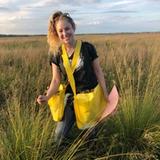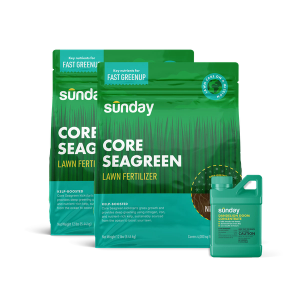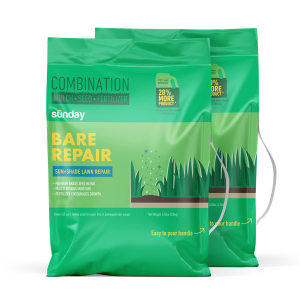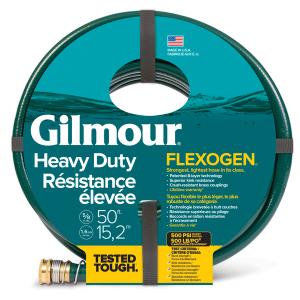Unless you live in the Pacific Northwest or northern California coast, you probably shouldn’t have a full lawn of this type of grass. Why not? Even though ryegrass is frequently found in many traditional grass seed blends and patch mixes, it’s not ideal for covering your entire lawn.
We’ll fill you in on where Ryegrass should be, well, filled in (if you’re picking up what we’re putting down!).
Is ryegrass right for my lawn?
Ryegrass is a dark blue-green colored, cool-season grass that tends to grow in northern and transitional zones but is most successful in temperate climates. It does well in moist soils with good drainage and prefers a neutral pH (not too acidic, not too basic) but is not shade tolerant.
Ryegrass is known to produce a lot of seed, germinate fast, and the seed is relatively inexpensive, making it a popular choice for home lawns. However, if you live in a climate that experiences extreme temperatures (as in very cold or very hot), we recommend avoiding establishing an entire ryegrass lawn and instead using it as a “nurse crop” or in a patch blend.
Sunday Tip:
Traditional grass seed mixes contain a lot of ryegrass seed but, purchasing this in place of better varieties will cost you more over time because of annual reseeding. Look closely at seed labels to avoid high proportions of ryegrass (seed mixes that contain over 50% ryegrass seed) and don’t be fooled by marketing claims.
Common types of ryegrass
Perennial ryegrass
Since it germinates fast, can grow in tough-to-cover areas, and establishes quickly, perennial ryegrass tends to be used for athletic fields and golf courses. However, this grass is also used in almost every home lawn grass seed patch mix for a couple of reasons:
- In established lawns, it’s usually used in patch mixes because it germinates quickly and covers bare soil quickly. It’s also traffic-tolerant and resilient to pet waste.
- In new lawns, it serves as a “nurse crop” in seed blends for other species to grow in. Bonus? Its dark green-blue color allows it to blend in easily with species like Kentucky bluegrass that grow a bit more slowly.
Annual ryegrass
This type of ryegrass also germinates fast and establishes quickly but tends to be a less expensive and poor-quality version of ryegrass. At Sunday, we do not recommend seeding in this species due to the high cost over time.
Establishing ryegrass into your lawn
- First, assess your lawn. Understand its light and shade zones and size, determine its grass type, and prep it for seed.
- Make sure to test your soil to understand nutrient needs and soil type.
- Follow the appropriate planting requirements for ryegrass in your lawn. Generally, ryegrass should be seeded in at a seeding rate of 6–8 lb. per 1000 sq. ft. Here’s more tips on how to properly seed in ryegrass:
- Be ready for rapid germination. Ryegrass tends to germinate in 4–6 days, has 60% ground cover in 10–14 days, and can completely fill in bare patches within 3–4 weeks.
- Follow the appropriate watering for seeding. Ryegrass seed needs daily watering to ensure germination, but usually only 2–3 minutes with an irrigation system or hand watering. Once the seeds germinate, reduce the daily watering to a normal schedule (2x–3x/week, dependent on rainfall).
- Maintain appropriate maintenance and routine lawn care practices. Then, watch your grass grow and enjoy!
Sunday Tip:
Keep the ground moist until at least 60% or more than ½ of the lawn or patched area is covered with grass.
Caring for your ryegrass lawn
Fertilization: Perennial ryegrass requires higher nutrient levels and should not be under-fertilized with nitrogen. As one of the fastest-growing cool-season grasses, it already establishes very fast and will require greater upkeep (e.g., mowing) with higher nutrient inputs.
Mowing: This species can be tricky to mow correctly due to the leaf blades' high silica content, which can cause shredding if using a dull mower blade. However, this grass is easy to mow and makes nice stripes (like what you’ll see on professional turf fields!). Ryegrass has the most rapid leaf extension rate and must be mowed more often than other species. Preparing for your first mow? We’ll help prep.
Sunday Tip:
Keep your mower blades sharp! If your mower blade isn’t sharp enough, the grass blades will experience shredding and tearing of leaf tissue, which causes browning and opens blades up to disease.
Watering: Ryegrass requires a deep and infrequent watering schedule. If rainfall occurs, the amount of rain should be accounted for when watering the lawn. If it doesn’t rain frequently, the irrigation system should be run for 60 minutes per week in 20–30-minute increments.
Pests: Japanese beetle, masked chafer, and billbugs are the main pests exacerbating ryegrass lawns. A consistent lawn care routine and monitoring for potential signs of insect presence is key to good pest management.
Diseases: Ryegrass can be disease-prone in wetter climates and has moderate disease susceptibility depending on climate conditions.
Weeds: Even though ryegrass can be established quickly, over time, a pure ryegrass lawn can decline for various reasons. A thinning or patchy lawn is prime territory for weeds. Ensure weeds do not move in by overseeding resilient seed blends that incorporate the best varieties of cool-season grasses.
Ryegrass vs. fescue
If you have the choice between a full lawn of perennial ryegrass and tall fescue, you should probably go with tall fescue. Tall fescue tends to be more resilient to extreme weather, grows in a variety of soil types and climates, and requires less maintenance than most cool-season species.
Want to convert your ryegrass lawn to fescue or another grass type? Sunday to the rescue! We can help transition your lawn using the best varieties of cool-season species. All you need to do is maintain good lawn care practices, follow your Sunday nutrient program, assess your lawn's attributes (light availability and soil), and know your climate.
Then, seed in the desired and best fit Sunday grass blends based on your lawn assessment: Fescue Rescue, Kentucky bluegrass, or Lucky Lawn.
Cited sources
Perennial Ryegrass. NC State Extension.
Perennial Ryegrass. Turfgrass Species and Variety Guidelines for NYS.
Choose Seed. Cornell University College of Agriculture & Life Sciences.



















